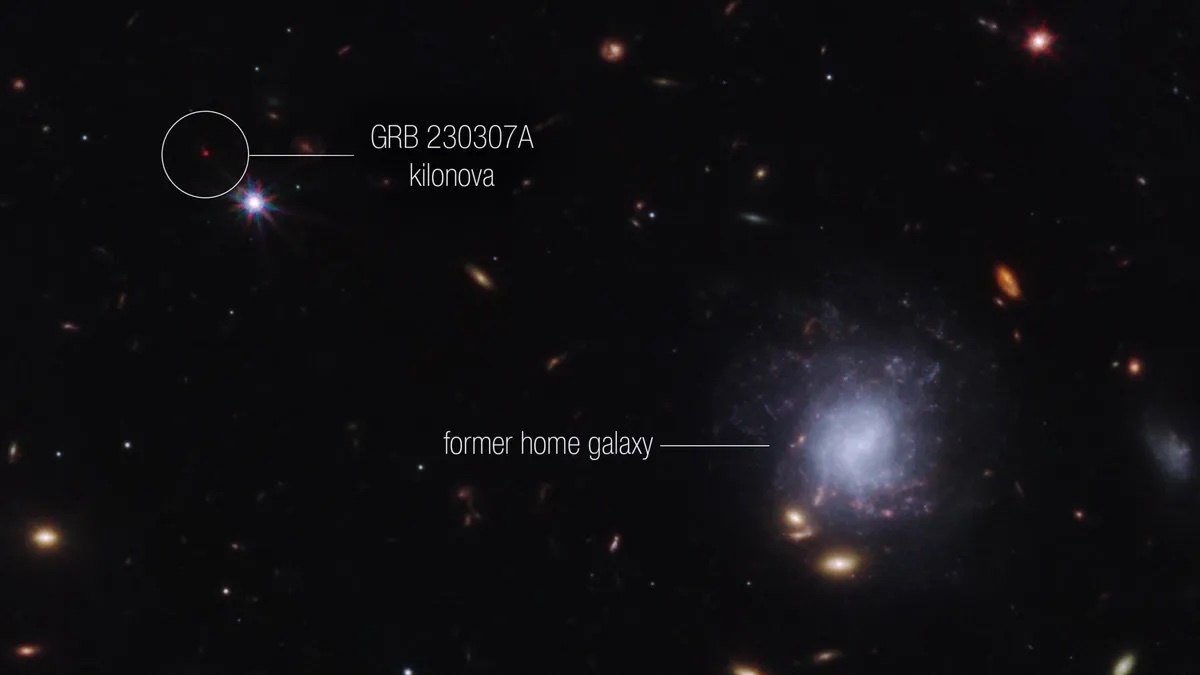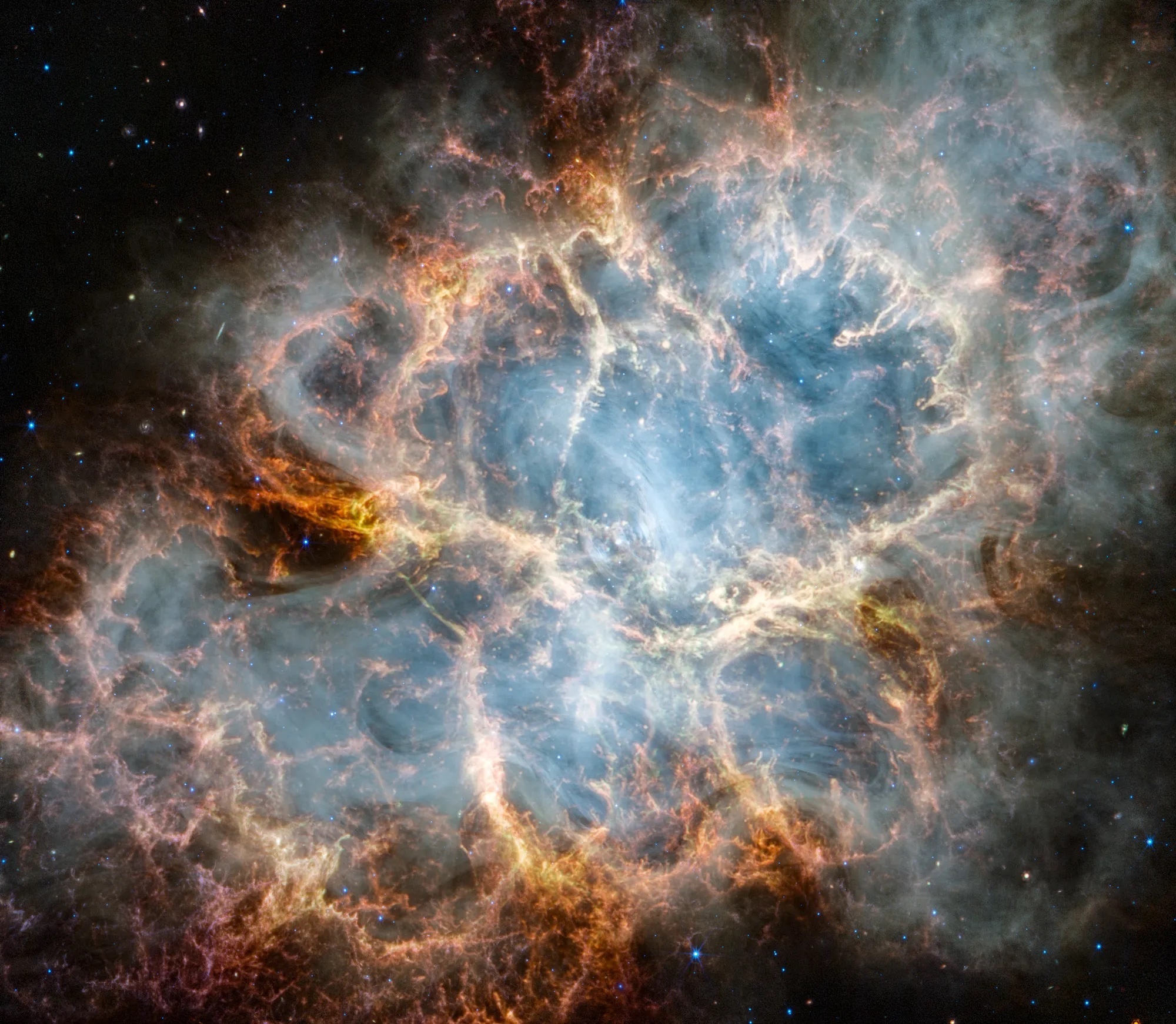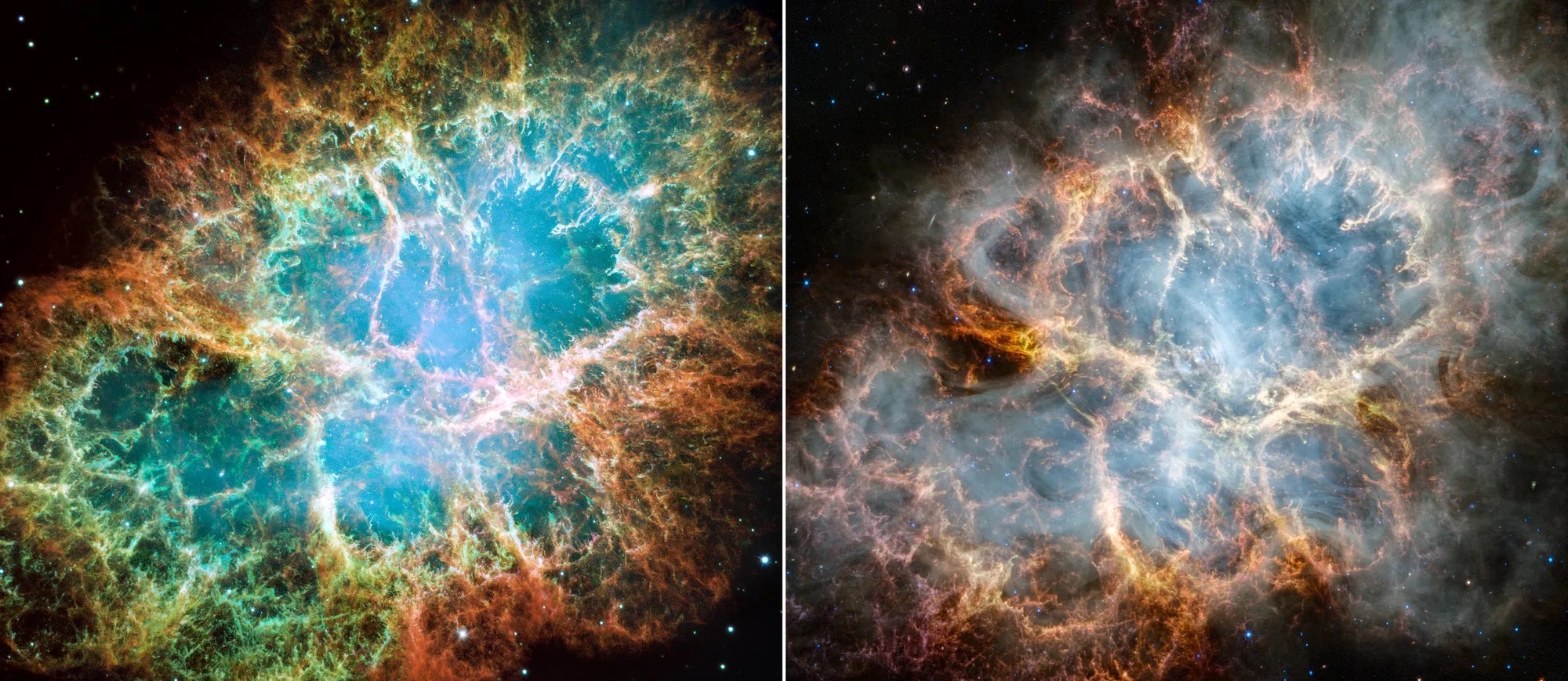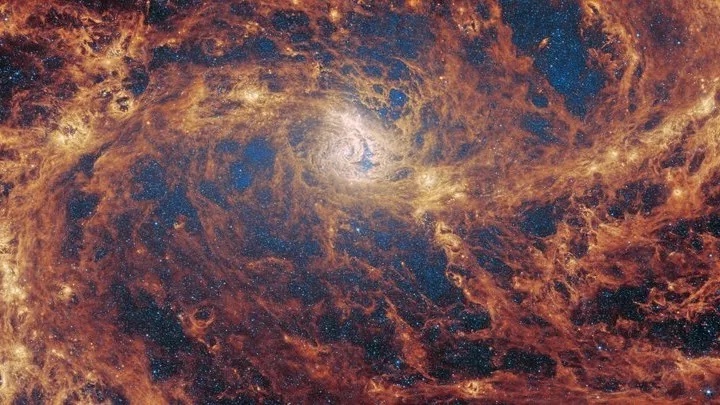5.10.2023
James Webb telescope makes 'JuMBO' discovery of planet-like objects in Orion
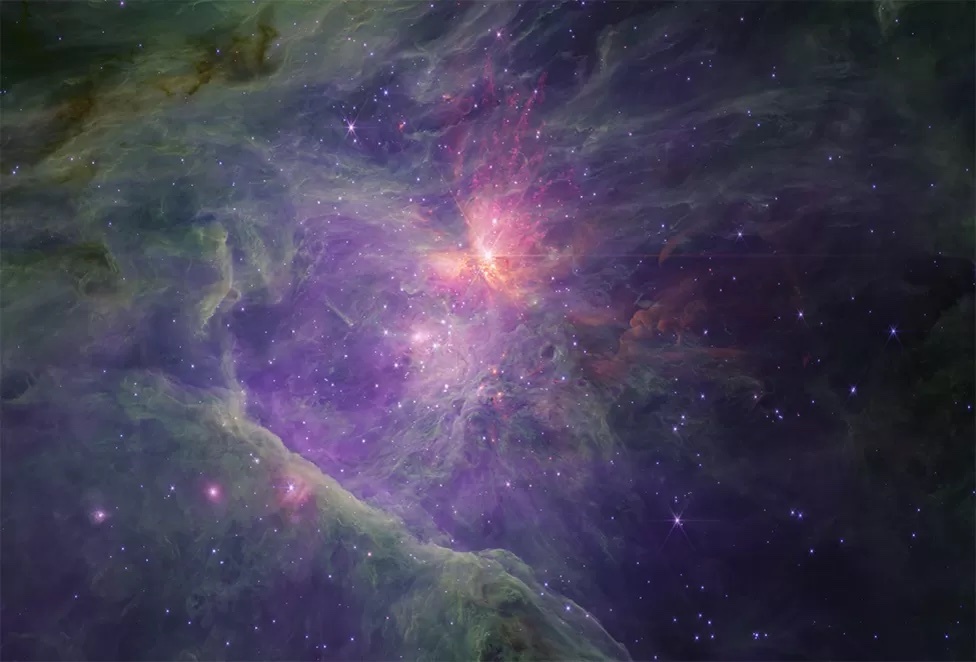
At just 1,400 light-years from Earth, the Orion Nebula, M42, is visible to the naked eye as a faint smudge
Jupiter-sized "planets" free-floating in space, unconnected to any star, have been spotted by the James Webb Space Telescope (JWST).
What's intriguing about the discovery is that these objects appear to be moving in pairs. Astronomers are currently struggling to explain them.
The telescope observed about 40 pairs in a fabulously detailed new survey of the famous Orion Nebula.
They've been nicknamed Jupiter Mass Binary Objects, or "JuMBOs" for short.
One possibility is that these objects grew out of regions in the nebula where the density of material was insufficient to make fully fledged stars.
Another possibility is that they were made around stars and were then kicked out into interstellar space through various interactions.
"The ejection hypothesis is the favoured one at the moment," said Prof Mark McCaughrean.
"Gas physics suggests you shouldn't be able to make objects with the mass of Jupiter on their own, and we know single planets can get kicked out from star systems. But how do you kick out pairs of these things together? Right now, we don't have an answer. It's one for the theoreticians," the European Space Agency's (Esa) senior science adviser told BBC News.
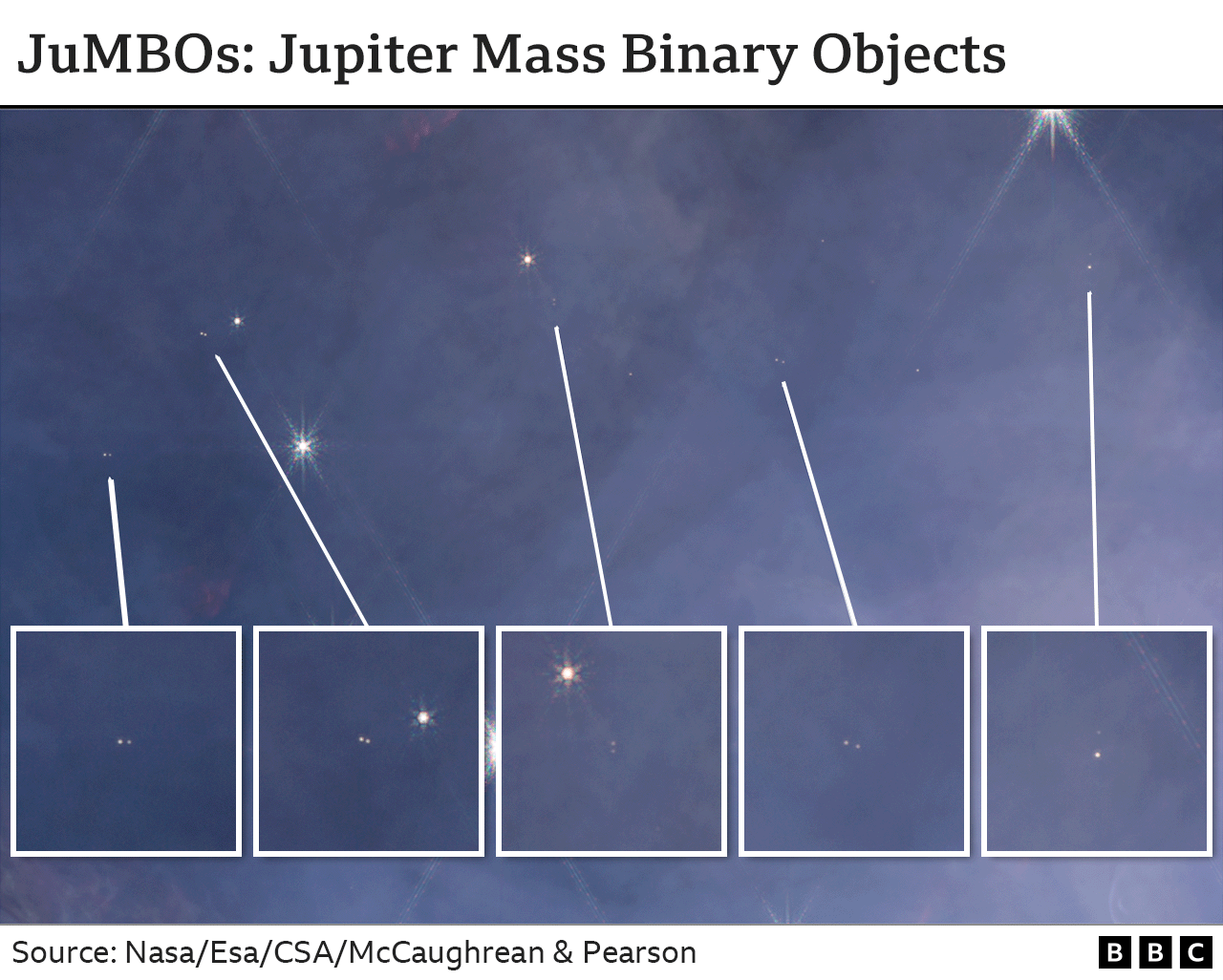
Prof McCaughrean led the team that produced the new Orion survey.
Using JWST's remarkable resolution and infrared sensitivity, the astronomers have added substantially to the information already mined by older telescopes, including Webb's direct predecessor, the Hubble Space Telescope.
The Orion Nebula, also known by its sky catalogue name of M42, is the nearest, large star-forming region to Earth.
Along with the quartet of bright suns at its centre called the Trapezium, this region of space is visible to the naked eye as a smudge on the sky.
If you don't know it, it can be found low down in the constellation of Orion, which is named after a mythical Greek hunter. The nebula forms part of the hunter's "sword", hanging from his "belt".
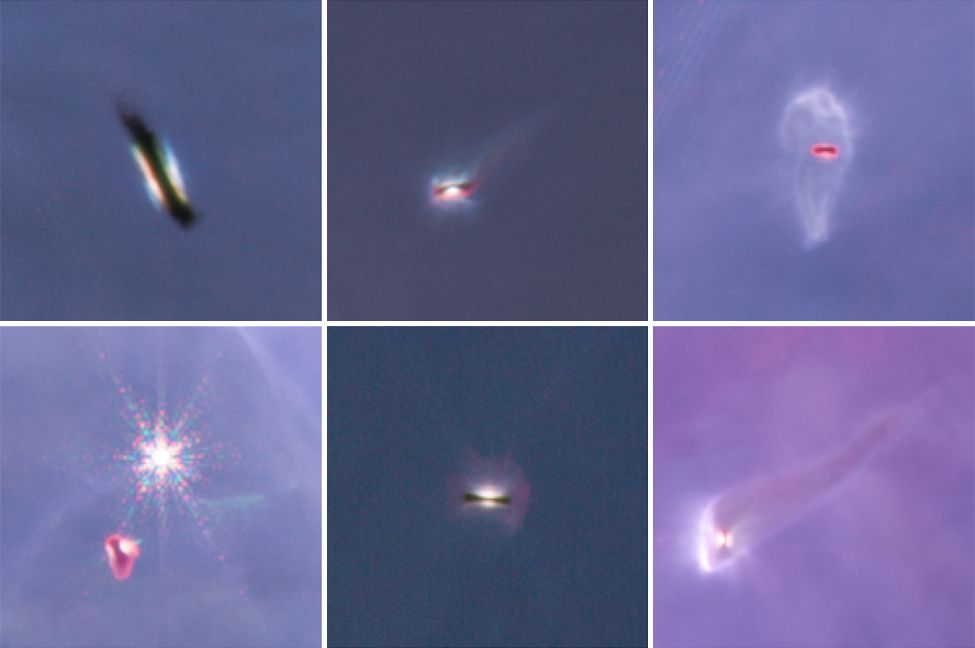
The new JWST image is actually a mosaic of 700 views acquired by Webb's NIRCam instrument over a week of observations.
To give a sense of scale, it would take a spaceship travelling at light speed a little over four years to traverse the entire scene. The nebula itself is about 1,400 light-years from Earth.
Tucked away in this vista are thousands of young stars, spanning a range of masses from 40 down to less than 0.1 times the mass of our Sun.
Many of these stars are surrounded by dense discs of gas and dust which may be forming planets, although in some cases, these discs are being destroyed by the intense ultraviolet radiation and strong winds from the most massive stars in the region, in particular from the Trapezium.
The slider tool on this page shows the same nebula scene at shorter and at longer wavelengths. Using different filters in this way emphasises items of interest.
Look at the longer wavelength version to examine the sculpted green clouds of gas that contain polycyclic aromatic hydrocarbons. PAHs are ubiquitous compounds in space produced by stars.
Look also at the many-fingered red feature that dominates the background.
Known as the Orion Molecular Cloud 1 outflow, this is a mass of molecular hydrogen that has been shocked by the the immense energy streaming away from the site of a cataclysmic collision of two giant stars. The speed of the outflow at more than 100km/s indicates the star merger occurred just a few hundred years previously.
Notice the fingertips are tinged with green - a marker for gaseous iron.
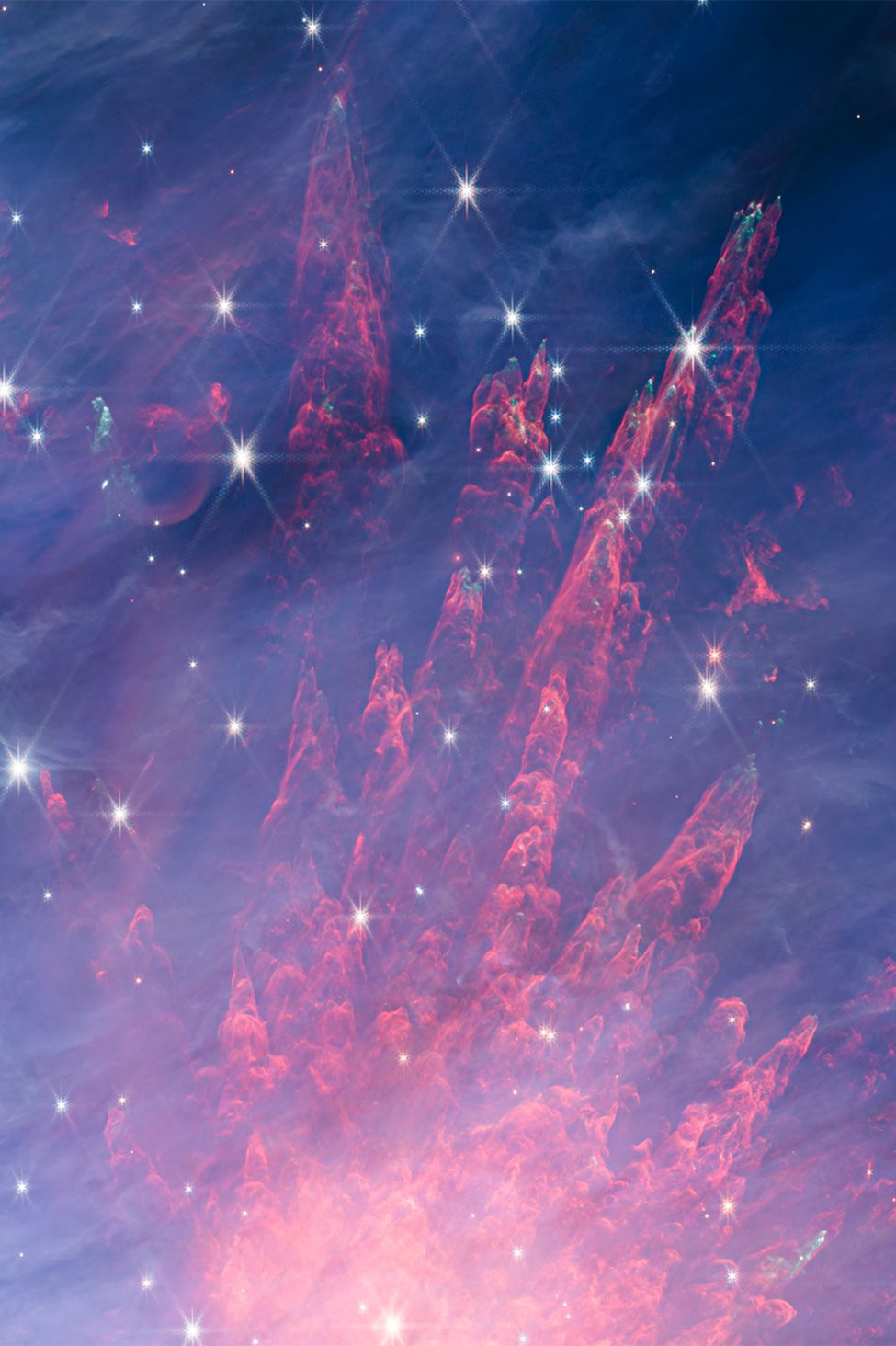
There is so much to peruse and probe in the full-sized survey image which is 21,000 by 14,500 pixels. But it is the JuMBOs that have caught the immediate attention of astronomers.
"My reactions ranged from: 'Whaaat?!?' to 'Are you sure?" to 'That's just so weird!' to 'How could binaries be ejected together?'" recalled Dr Heidi Hammel who was not on the survey team.
She said there were no models of planetary system formation that predicted the ejection of binary pairs of planets.
"But... maybe all star formation regions host these double-Jupiters (and maybe even double-Neptunes and double Earths!), and we just haven't had a telescope powerful enough to see them before," the multidisciplinary scientist on JWST told BBC News.
Esa will be posting the full image of M42 on its EsaSky portal which allows anyone to explore publicly available astronomical data. Initial papers describing the survey and the JuMBO discovery will be posted on the arXiv shortly, but can also be accessed here.
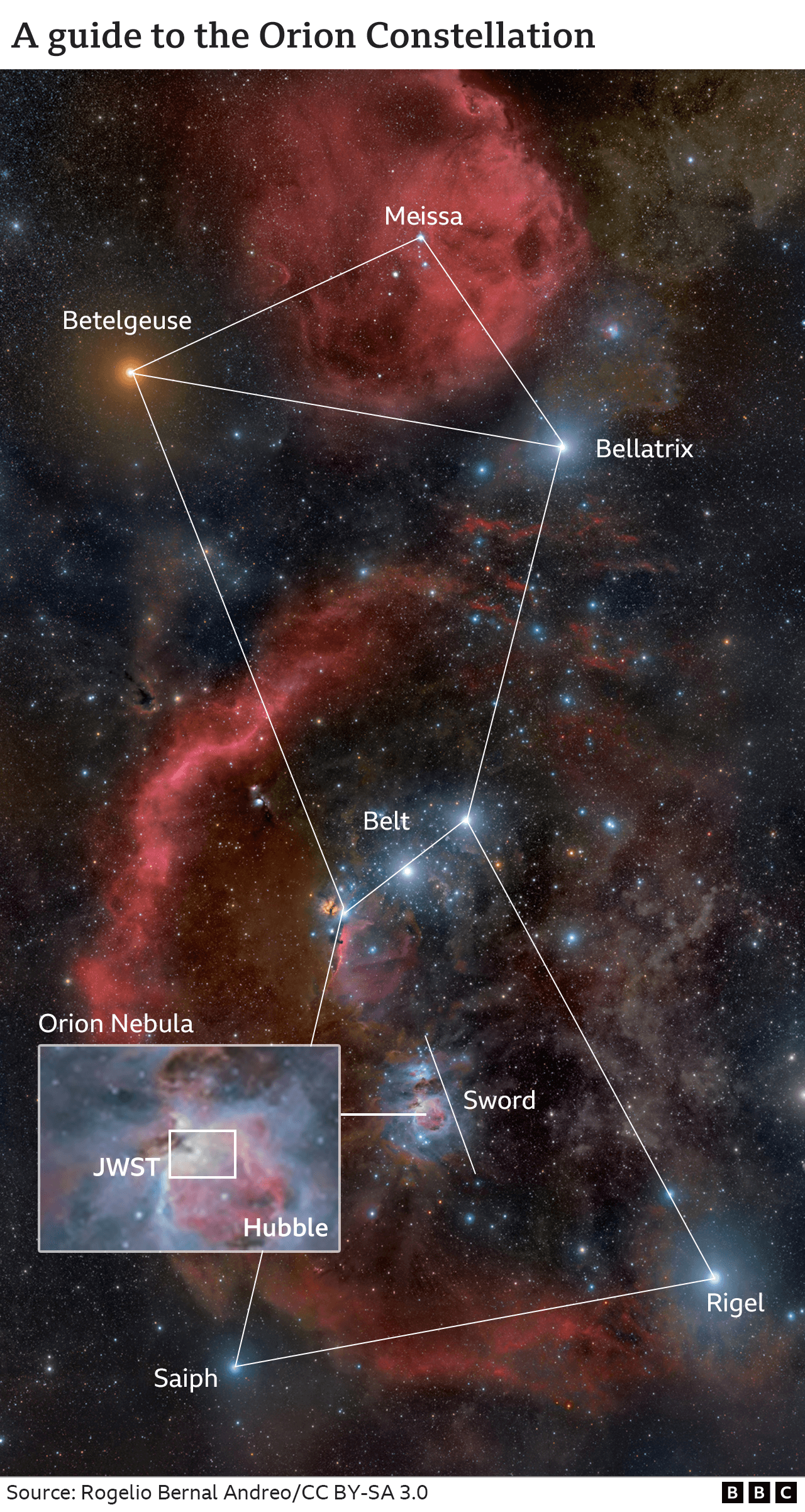
Webb Detects Tiny Quartz Crystals in the Clouds of a Hot Gas Giant
Researchers using NASA’s James Webb Space Telescope have detected evidence for quartz nanocrystals in the high-altitude clouds of WASP-17 b, a hot Jupiter exoplanet 1,300 light-years from Earth. The detection, which was uniquely possible with MIRI (Webb’s Mid-Infrared Instrument), marks the first time that silica (SiO2) particles have been spotted in an exoplanet atmosphere.
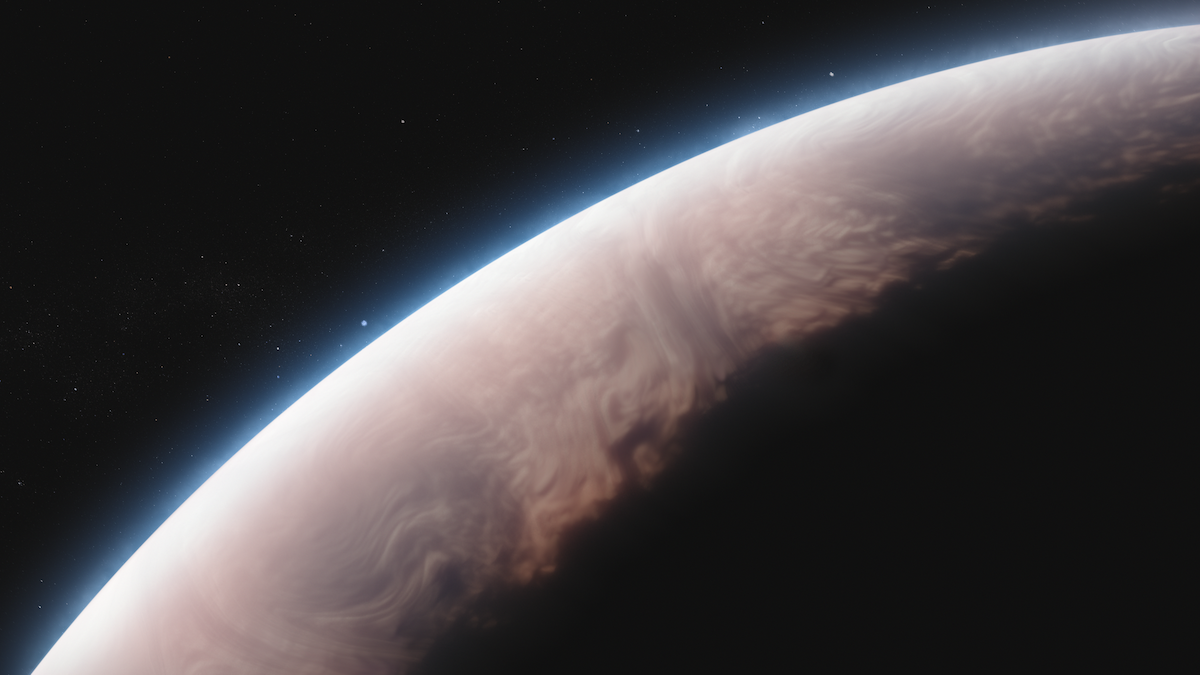
“We were thrilled!” said David Grant, a researcher at the University of Bristol in the UK and first author on a paper being published today in the Astrophysical Journal Letters. “We knew from Hubble observations that there must be aerosols—tiny particles making up clouds or haze—in WASP-17 b’s atmosphere, but we didn’t expect them to be made of quartz.”
Silicates (minerals rich in silicon and oxygen) make up the bulk of Earth and the Moon as well as other rocky objects in our solar system, and are extremely common across the galaxy. But the silicate grains previously detected in the atmospheres of exoplanets and brown dwarfs appear to be made of magnesium-rich silicates like olivine and pyroxene, not quartz alone – which is pure SiO2.
The result from this team, which also includes researchers from NASA’s Ames Research Center and NASA’s Goddard Space Flight Center, puts a new spin on our understanding of how exoplanet clouds form and evolve. “We fully expected to see magnesium silicates,” said co-author Hannah Wakeford, also from the University of Bristol. “But what we’re seeing instead are likely the building blocks of those, the tiny ‘seed’ particles needed to form the larger silicate grains we detect in cooler exoplanets and brown dwarfs.”
Detecting Subtle Variations
With a volume more than seven times that of Jupiter and a mass less than one-half Jupiter, WASP-17 b is one of the largest and puffiest known exoplanets. This, along with its short orbital period of just 3.7 Earth-days, makes the planet ideal for transmission spectroscopy : a technique that involves measuring the filtering and scattering effects of a planet’s atmosphere on starlight.
Webb observed the WASP-17 system for nearly 10 hours, collecting more than 1,275 brightness measurements of 5- to 12-micron mid-infrared light as the planet crossed its star. By subtracting the brightness of individual wavelengths of light that reached the telescope when the planet was in front of the star from those of the star on its own, the team was able to calculate the amount of each wavelength blocked by the planet’s atmosphere.
What emerged was an unexpected “bump” at 8.6 microns, a feature that would not be expected if the clouds were made of magnesium silicates or other possible high temperature aerosols like aluminum oxide, but which makes perfect sense if they are made of quartz.
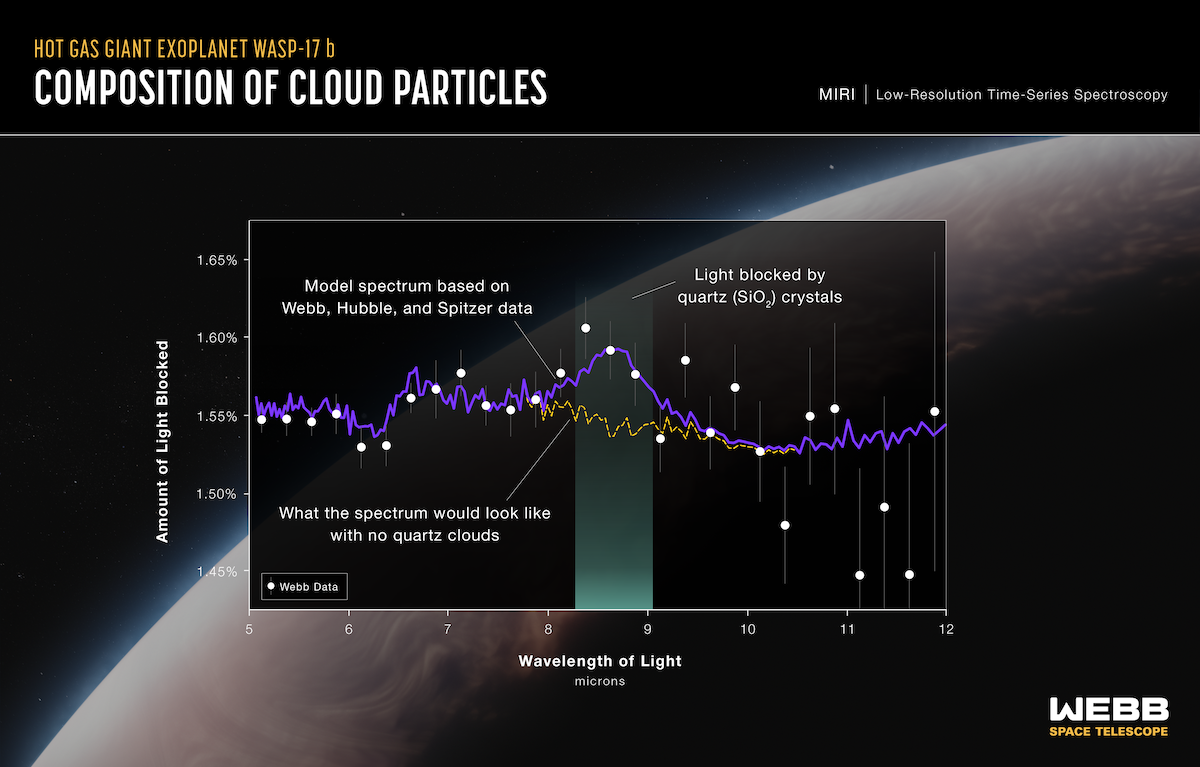
The spectrum was made by measuring the change in brightness of 28 wavelength-bands of mid-infrared light as the planet transited the star. Webb observed the WASP-17 system using MIRI’s low-resolution spectrograph for nearly 10 hours, collecting more than 1,275 measurements before, during, and after the transit.
For each wavelength, the amount of light blocked by the planet’s atmosphere (white circles) was calculated by subtracting the amount that made it through the atmosphere from the amount originally emitted by the star.
The solid purple line is a best-fit model to the Webb (MIRI), Hubble, and Spitzer data. (The Hubble and Spitzer data cover wavelengths from 0.34 to 4.5 microns and are not shown on the graph.) The spectrum shows a clear feature around 8.6 microns, which astronomers think is caused by silica particles absorbing some of the starlight passing through the atmosphere.
The dashed yellow line shows what that part of the transmission spectrum would look like if the clouds in WASP-17 b’s atmosphere did not contain SiO2.
This marks the first time that SiO2 has been identified in an exoplanet, and the first time any specific cloud species has been identified in a transiting exoplanet.
Crystals, Clouds, and Winds
While these crystals are probably similar in shape to the pointy hexagonal prisms found in geodes and gem shops on Earth, each one is only about 10 nanometers across—one-millionth of one centimeter.
“Hubble data actually played a key role in constraining the size of these particles,” explained co-author Nikole Lewis of Cornell University, who leads the Webb Guaranteed Time Observation (GTO) program designed to help build a three-dimensional view of a hot Jupiter atmosphere. “We know there is silica from Webb’s MIRI data alone, but we needed the visible and near-infrared observations from Hubble for context, to figure out how large the crystals are.”
Unlike mineral particles found in clouds on Earth, the quartz crystals detected in the clouds of WASP-17 b are not swept up from a rocky surface. Instead, they originate in the atmosphere itself. “WASP-17 b is extremely hot—around 1,500 degrees Celsius (2,700°F)—and the pressure where they form high in the atmosphere is only about one-thousandth of what we experience on Earth’s surface,” explained Grant. “In these conditions, solid crystals can form directly from gas, without going through a liquid phase first.”
Understanding what the clouds are made of is crucial for understanding the planet as a whole. Hot Jupiters like WASP-17 b are made primarily of hydrogen and helium, with small amounts of other gases like water vapor (H2O) and carbon dioxide (CO2). “If we only consider the oxygen that is in these gases, and neglect to include all of the oxygen locked up in minerals like quartz (SiO2), we will significantly underestimate the total abundance,” explained Wakeford. “These beautiful silica crystals tell us about the inventory of different materials and how they all come together to shape the environment of this planet.”
Exactly how much quartz there is, and how pervasive the clouds are, is hard to determine. “The clouds are likely present along the day/night transition (the terminator), which is the region that our observations probe,” said Grant. Given that the planet is tidally locked with a very hot day side and cooler night side, it is likely that the clouds circulate around the planet, but vaporize when they reach the hotter day side. “The winds could be moving these tiny glassy particles around at thousands of miles per hour.”
WASP-17 b is one of three planets targeted by the JWST-Telescope Scientist Team’s Deep Reconnaissance of Exoplanet Atmospheres using Multi-instrument Spectroscopy (DREAMS) investigations, which are designed to gather a comprehensive set of observations of one representative from each key class of exoplanets: a hot Jupiter, a warm Neptune, and a temperate rocky planet. The MIRI observations of hot Jupiter WASP-17 b were made as part of GTO program 1353.
Quelle: NASA
----
Update: 21.10.2023
.
NASA’s Webb Discovers New Feature in Jupiter’s Atmosphere
Narrow jet stream near equator has winds traveling 320 miles per hour
NASA’s James Webb Space Telescope has discovered a new, never-before-seen feature in Jupiter’s atmosphere. The high-speed jet stream, which spans more than 3,000 miles (4,800 kilometers) wide, sits over Jupiter’s equator above the main cloud decks. The discovery of this jet is giving insights into how the layers of Jupiter’s famously turbulent atmosphere interact with each other, and how Webb is uniquely capable of tracking those features.
Image: Webb’s View of Jupiter
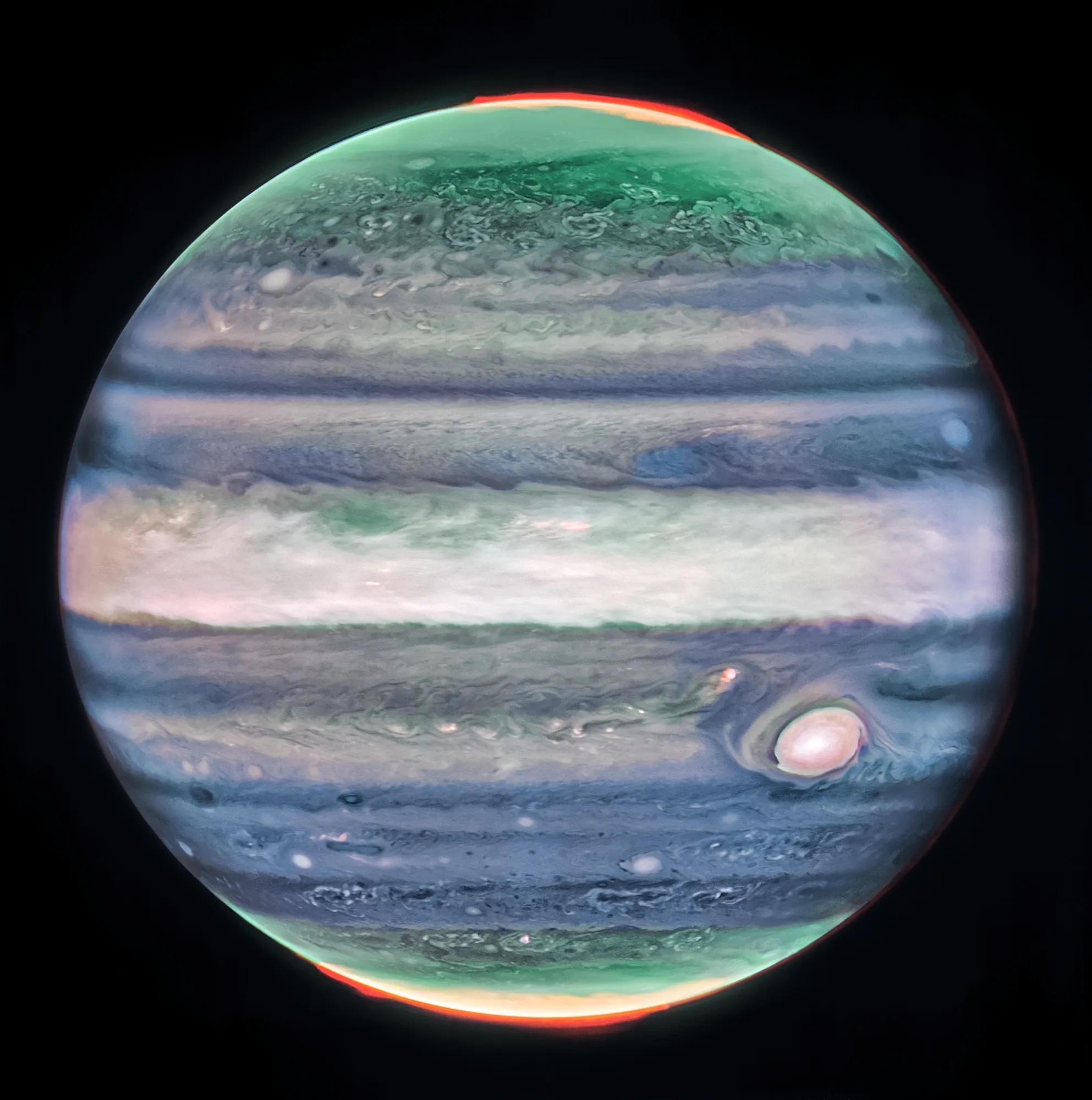
“This is something that totally surprised us,” said Ricardo Hueso of the University of the Basque Country in Bilbao, Spain, lead author on the paper describing the findings. “What we have always seen as blurred hazes in Jupiter’s atmosphere now appear as crisp features that we can track along with the planet’s fast rotation.”
The research team analyzed data from Webb’s NIRCam (Near-Infrared Camera) captured in July 2022. The Early Release Science program – jointly led by Imke de Pater from the University of California, Berkeley and Thierry Fouchet from the Observatory of Paris – was designed to take images of Jupiter 10 hours apart, or one Jupiter day, in four different filters, each uniquely able to detect changes in small features at different altitudes of Jupiter’s atmosphere.
“Even though various ground-based telescopes, spacecraft like NASA’s Juno and Cassini, and NASA’s Hubble Space Telescope have observed the Jovian system’s changing weather patterns, Webb has already provided new findings on Jupiter’s rings, satellites, and its atmosphere,” de Pater noted.
While Jupiter is different from Earth in many ways – Jupiter is a gas giant, Earth is a rocky, temperate world – both planets have layered atmospheres. Infrared, visible, radio, and ultraviolet light wavelengths observed by these other missions detect the lower, deeper layers of the planet’s atmosphere – where gigantic storms and ammonia ice clouds reside.
Image: Jupiter’s Equatorial Jet Stream
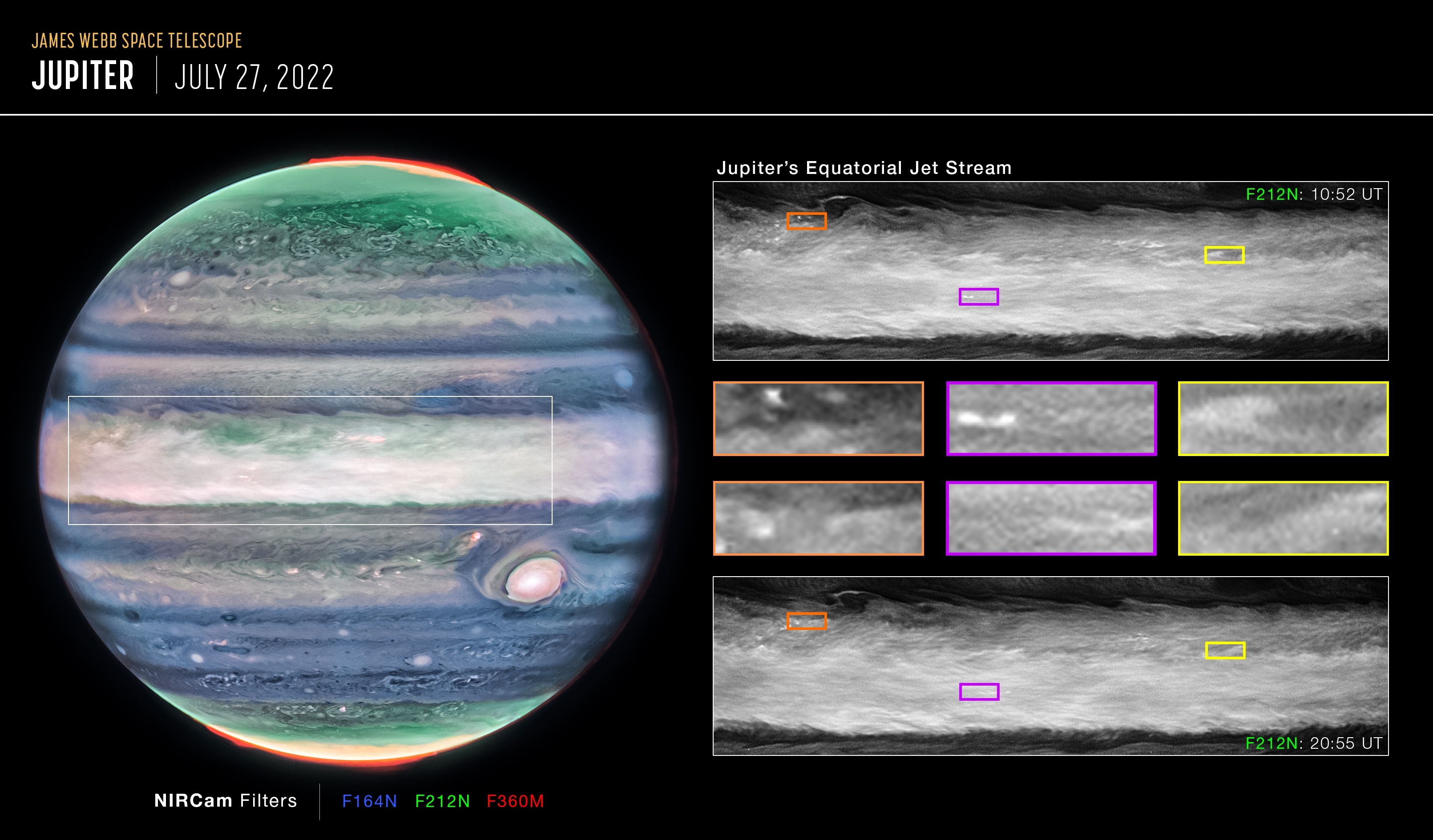
On the other hand, Webb’s look farther into the near-infrared than before is sensitive to the higher-altitude layers of the atmosphere, around 15-30 miles (25-50 kilometers) above Jupiter’s cloud tops. In near-infrared imaging, high-altitude hazes typically appear blurry, with enhanced brightness over the equatorial region. With Webb, finer details are resolved within the bright hazy band.
The newly discovered jet stream travels at about 320 miles per hour (515 kilometers per hour), twice the sustained winds of a Category 5 hurricane here on Earth. It is located around 25 miles (40 kilometers) above the clouds, in Jupiter’s lower stratosphere.
By comparing the winds observed by Webb at high altitudes, to the winds observed at deeper layers from Hubble, the team could measure how fast the winds change with altitude and generate wind shears.
Image: Jupiter’s Winds
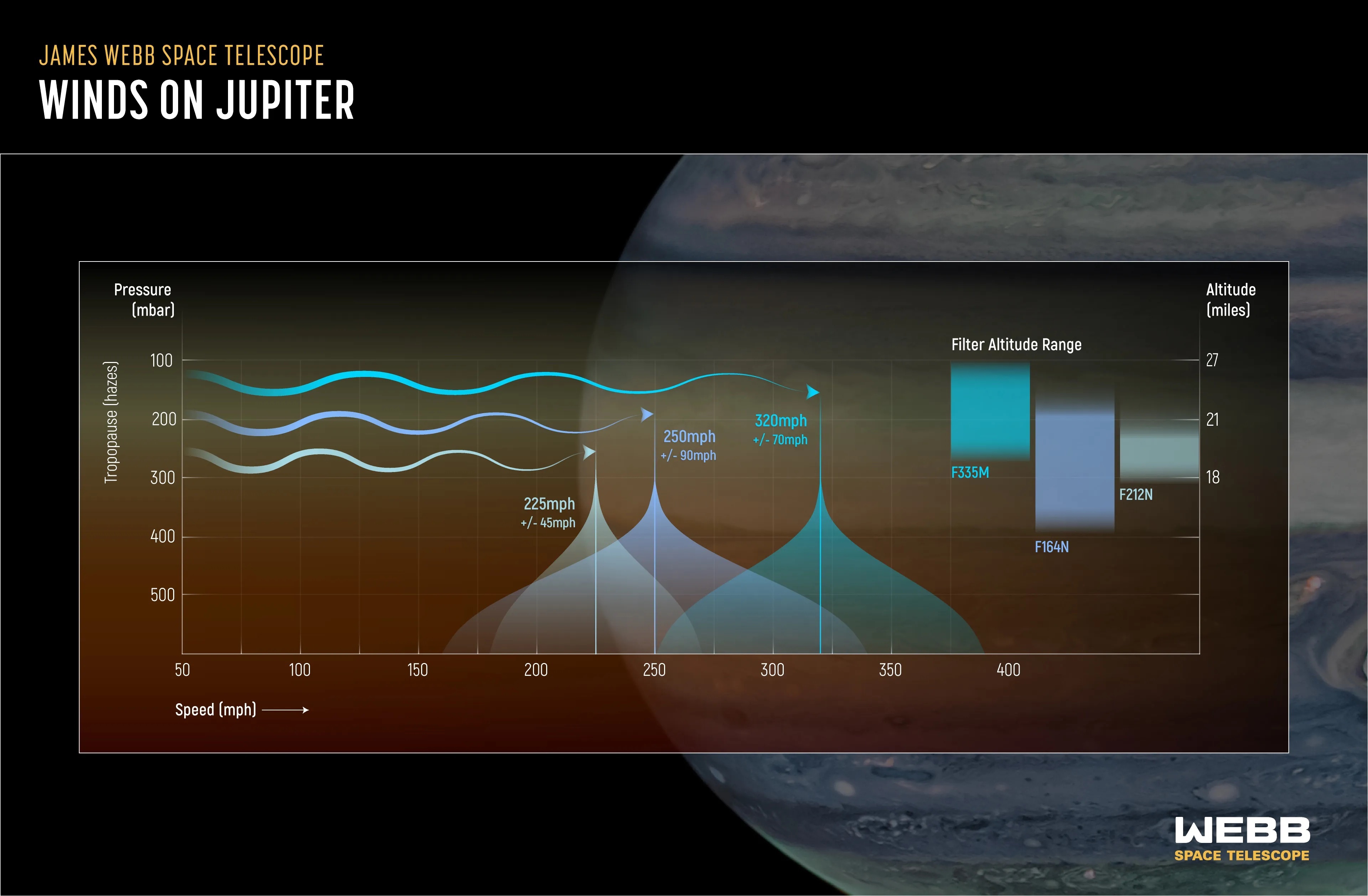
While Webb’s exquisite resolution and wavelength coverage allowed for the detection of small cloud features used to track the jet, the complementary observations from Hubble taken one day after the Webb observations were also crucial to determine the base state of Jupiter’s equatorial atmosphere and observe the development of convective storms in Jupiter’s equator not connected to the jet.
“We knew the different wavelengths of Webb and Hubble would reveal the three-dimensional structure of storm clouds, but we were also able to use the timing of the data to see how rapidly storms develop,” added team member Michael Wong of the University of California, Berkeley, who led the associated Hubble observations.
The researchers are looking forward to additional observations of Jupiter with Webb to determine if the jet’s speed and altitude change over time.
Image: Zoom in on Webb’s View of Jupiter
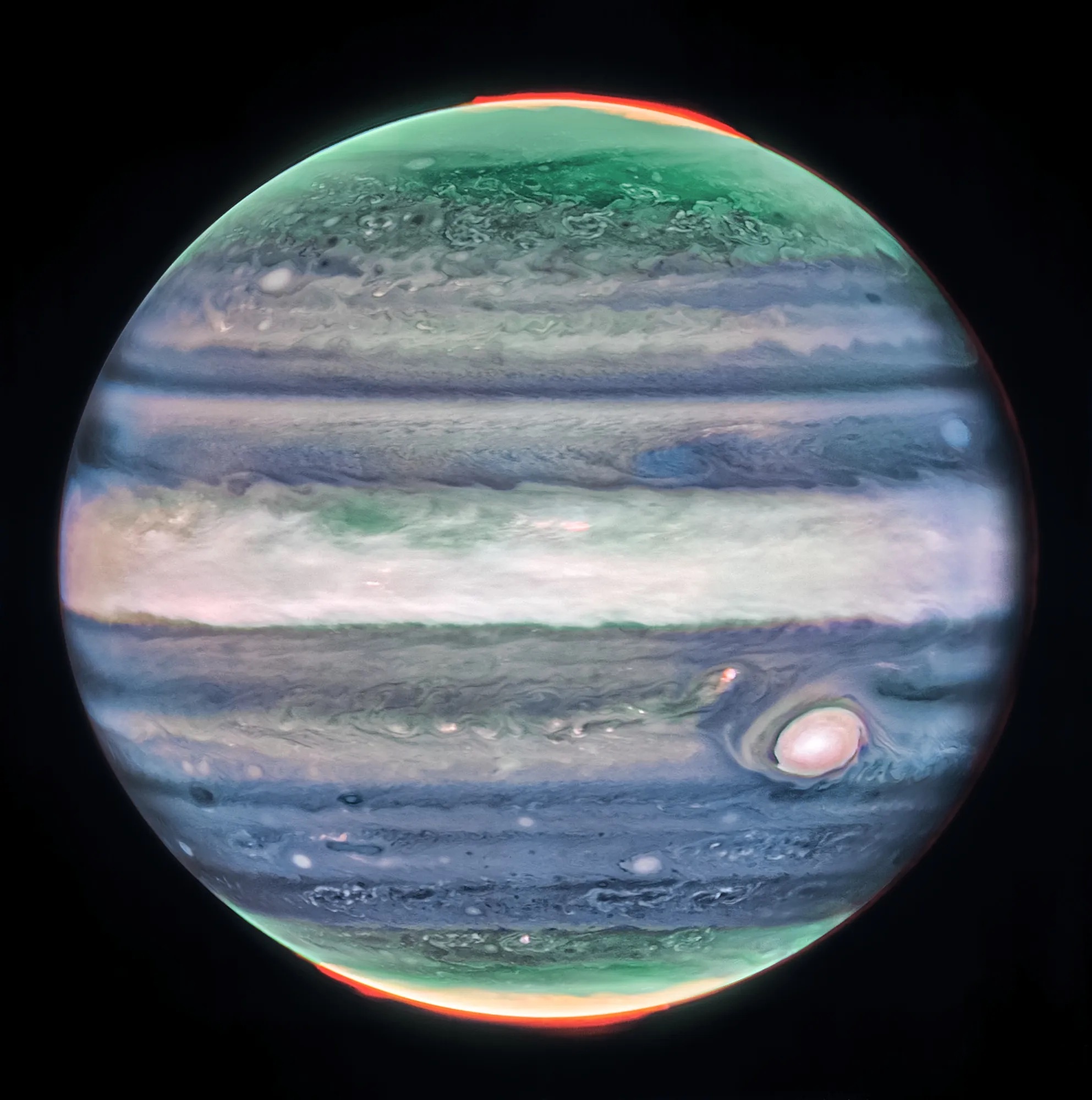
“Jupiter has a complicated but repeatable pattern of winds and temperatures in its equatorial stratosphere, high above the winds in the clouds and hazes measured at these wavelengths,” explained team member Leigh Fletcher of the University of Leicester in the United Kingdom. “If the strength of this new jet is connected to this oscillating stratospheric pattern, we might expect the jet to vary considerably over the next 2 to 4 years – it’ll be really exciting to test this theory in the years to come.”
“It’s amazing to me that, after years of tracking Jupiter’s clouds and winds from numerous observatories, we still have more to learn about Jupiter, and features like this jet can remain hidden from view until these new NIRCam images were taken in 2022,” continued Fletcher.
Quelle: NASA
----
Update: 27.10.2023
.
James Webb Space Telescope finds rare heavy chemical element from 'kilonova' explosion


